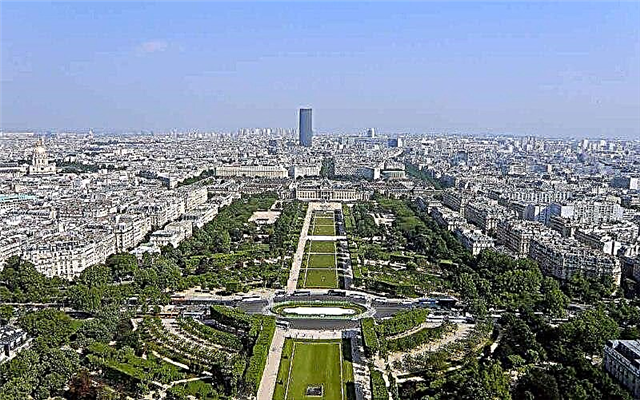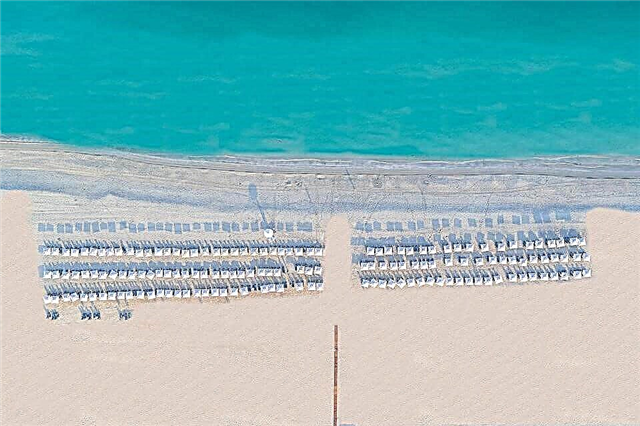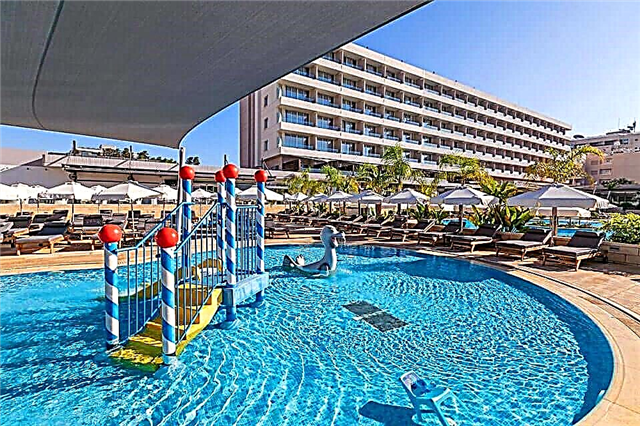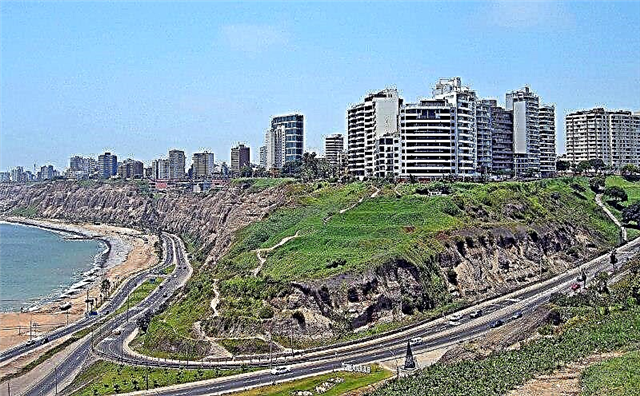Address: Russia, Moscow, intersection of Rozhdestvenka streets and Rozhdestvensky boulevard
Foundation date: XIV century (1386)
Main attractions: Cathedral of the Nativity of the Most Holy, the Church of the Kazan Icon of the Mother of God, the Church of St. John Chrysostom, the bell tower with the Church of Eugene of Kherson
Shrines: the icon of the Prophet, Forerunner and Baptist of the Lord John, icons of St. Nicholas the Wonderworker, a particle of the relics of the holy Great Martyr Barbara, a particle of the relics of the Holy Great Martyr George the Victorious, the Bogolyubskaya icon of the Mother of God, the icon of the Nativity of the Most Holy Theotokos
Coordinates: 55 ° 45'56.7 "N 37 ° 37'28.8" E
Content:
In the very center of the city there is one of the oldest women's cloisters in Moscow, the chronicle of which begins at the end of the XIV century. The Orthodox monastery went through a period of prosperity and difficult years of oblivion. Today, its temples are beautifully restored and open to pilgrims and tourists.

General view of the Rozhdestvensky monastery
History of the monastery
In 1386, Maria Konstantinovna, the widow of Prince Andrei Ivanovich of Serpukhov, took monastic vows under the name Martha and established a new monastery. According to the main cathedral, they began to call it "The Nativity of the Virgin on the Moat." Fulfilling the princess's desire, Sergius of Radonezh took over the duties of the monastery's confessor.
Historians differ as to the place where the monastery was originally located. Some of them believe that he stood in the center of the Kremlin, while others are sure that the monastery was located near Kuchkov Field, on the steep left bank of the Neglinka River.
According to legend, Maria Konstantinovna decided to found a monastery in gratitude that her son returned alive after the bloody battle of Kulikovo. To perpetuate the memory of the fateful battle, crosses with crescents were installed on the churches, and the first inhabitants of the monastery were widows, mothers, sisters and daughters of soldiers who fell on the Kulikovo field.
In the 30s of the 15th century, the wife of Prince Vladimir the Brave, Elena, took monastic vows here. Before that, she presented the monastery with the village of Kosino with the Holy Lake and several villages, and after her death the nun was buried in the monastery cemetery.

View of the monastery from the side of Rozhdestvensky Boulevard
Under John III, a large-scale reconstruction of the Kremlin began. It was decided to withdraw the nunnery from the grand-ducal residence, and in 1484 the monastery moved to the place where it is located today. The road passing along the monastery connected the Kremlin and Kuchkovo Pole, and soon the name Rozhdestvenka or "church" street was assigned to it.
At the beginning of the 16th century, a stone cathedral of the Nativity of the Virgin appeared in the monastery. The beautiful one-domed church was built in the best traditions of early Moscow architecture and it became an architectural replica of one of the oldest Moscow churches - the Spassky Cathedral of the Andronikov Monastery. It is known that in 1505 John III himself attended the consecration of the new church.
In the middle of the 16th century, Moscow experienced a terrible fire. The fire did not spare Rozhdestvenka and the convent that stood here. The cathedral church was especially badly damaged. The money for it was allocated by the wife of John IV the Terrible - Tsarina Anastasia Romanovna, and by the decree of the tsar a stone Nikolsky side-chapel was added to it. From numerous alterations, the cathedral began to look heavy and no longer resemble a candle directed upwards.

Church of the Kazan Icon of the Mother of God
In the 1670s, a tomb was built in the monastery for the Russian princes Lobanov-Rostovsky, who were very proud of the fact that they descended from Rurik himself. At first, the building had one floor, and then it was completed with a second floor, and the monastery sacristy began to be kept there. Thanks to the contributions of the Lobanov-Rostovskys, the monastery acquired the Church of St. John Chrysostom, a tent bell tower and a fence with the Holy Gates and four towers.
In 1764, on the initiative of Empress Catherine II, a church reform took place in Russia. Like many other monasteries, Rozhdestvensky lost part of its lands, but began to receive money from the treasury for the maintenance of churches and the monastic community.
In 1812, before the arrival of the French, the abbess managed to hide what was kept in the monastery sacristy. Napoleonic soldiers broke into the monastery, but did not find the treasure and began to plunder the temples. One of the French generals settled in the monastery, and by his order the refectory was turned into a stable.
By the beginning of the last century, the convent flourished. On its territory there were four temples and three-storey stone buildings. There was a parish school at the monastery and an orphanage for girls.

Church of St. John Chrysostom
With the advent of Soviet power, the fate of all monasteries in Moscow changed dramatically. In 1921, the Nativity monastery was closed. During the campaign for the removal of church valuables, 17 poods of silver were taken out of the monastery - all the silver vestments and valuable liturgical utensils. Some of the icons were transferred to other Moscow churches, while others were simply thrown away.
In 1922, the sisters continued to live in the monastery, but they began to take rent from them. The empty buildings housed the All-Russian Committee for Aid to Soldiers and a concentration camp, and then the buildings were given to the police and cadets. The nuns were kicked out the following year. The Church of St. John Chrysostom was converted into a club, and the refectory of the Kazan temple was turned into a dining room. In subsequent years, the monastery buildings were occupied by various organizations, scientific and educational institutions. The former cells were used as communal apartments.
In the early 1990s, the buildings were returned to believers. Two years later, the first services were held in the cathedral church, and a year later the convent was revived.

Cathedral of the Nativity of the Blessed Virgin
Architectural monuments
The rectangular area is surrounded by a stone fence with towers. The central place on it is occupied by the old Nativity Cathedral, which was built in 1501-1505. During the restoration work carried out, researchers discovered an ancient white-stone masonry and came to the conclusion that the cathedral was erected on the foundations of an older stone church.
The four-pillar temple is crowned with a high drum with a helmet-shaped head. In the cathedral refectory, tombstones of the 17th-18th centuries have been preserved. From the southeast side, the building is adjoined by the old tomb of the Lobanov-Rostovskys.
To the south of the Nativity Cathedral is the large church of St. John Chrysostom. The first temple on this site was made of wood, but in the 1670s-1680s it was rebuilt in stone. The warm church was built in the best traditions of the posad temples of the 17th century. It has five chapters and a spacious refectory. Today the temple has been well restored and is open to believers.

Bell tower with the church of Eugene of Kherson
From the north of the Nativity Cathedral, you can see a long three-story building, over which the five-domed temple of the Kazan Icon of the Mother of God rises. This church was built at the beginning of the last century by the architect P.A.Vinogradov. The picturesque red-brick building is made in the tradition of retrospectivism and is decorated with intricate platbands, columns and flies. During the years of Soviet power, the domes of the temple were demolished, and students of the Moscow Architectural Institute were studying inside.
The Church of Eugene Kherson is located under a three-tiered bell tower, which stands near the entrance gate, from the side of Rozhdestvenka Street. The first temple was built according to the project of the architect N.I. Kozlovsky in the 30s of the XIX century, however, 100 years later, by the decision of the authorities, it was destroyed. The church that can be seen today replaced the one that was lost in 2005.
The monastery today
The Convent is an active monastery in which the monastic community permanently resides, and church services are held twice a day at 7.00 and 17.00.

View of the monastery from Rozhdestvenka street
A church-singing school has been opened at the monastery, where women study the liturgical charter, catechism, liturgy, solfeggio and study in a choral class. Education in it is designed for three years. There is also a library and Sunday school classes. Nuns and novices are active in charity work, collecting things for the poor, homeless and large families.
The icons of the Nativity of the Most Holy Theotokos, Nicholas the Wonderworker, John the Baptist, the healer Panteleimon, the Optina elders and Sophia of Suzdal are considered the shrines of the monastery. In addition, believers come to monastery churches to venerate the particles of the relics of the Great Martyr Barbara and George the Victorious.
How to get there
The territory of the monastery is located near the intersection of Rozhdestvensky Boulevard and Rozhdestvenka Street, and is only 1.5 km from the Moscow Kremlin. A few minutes before the entrance to the monastery, you can walk from the Trubnaya or Tsvetnoy Bulvar metro stations.











